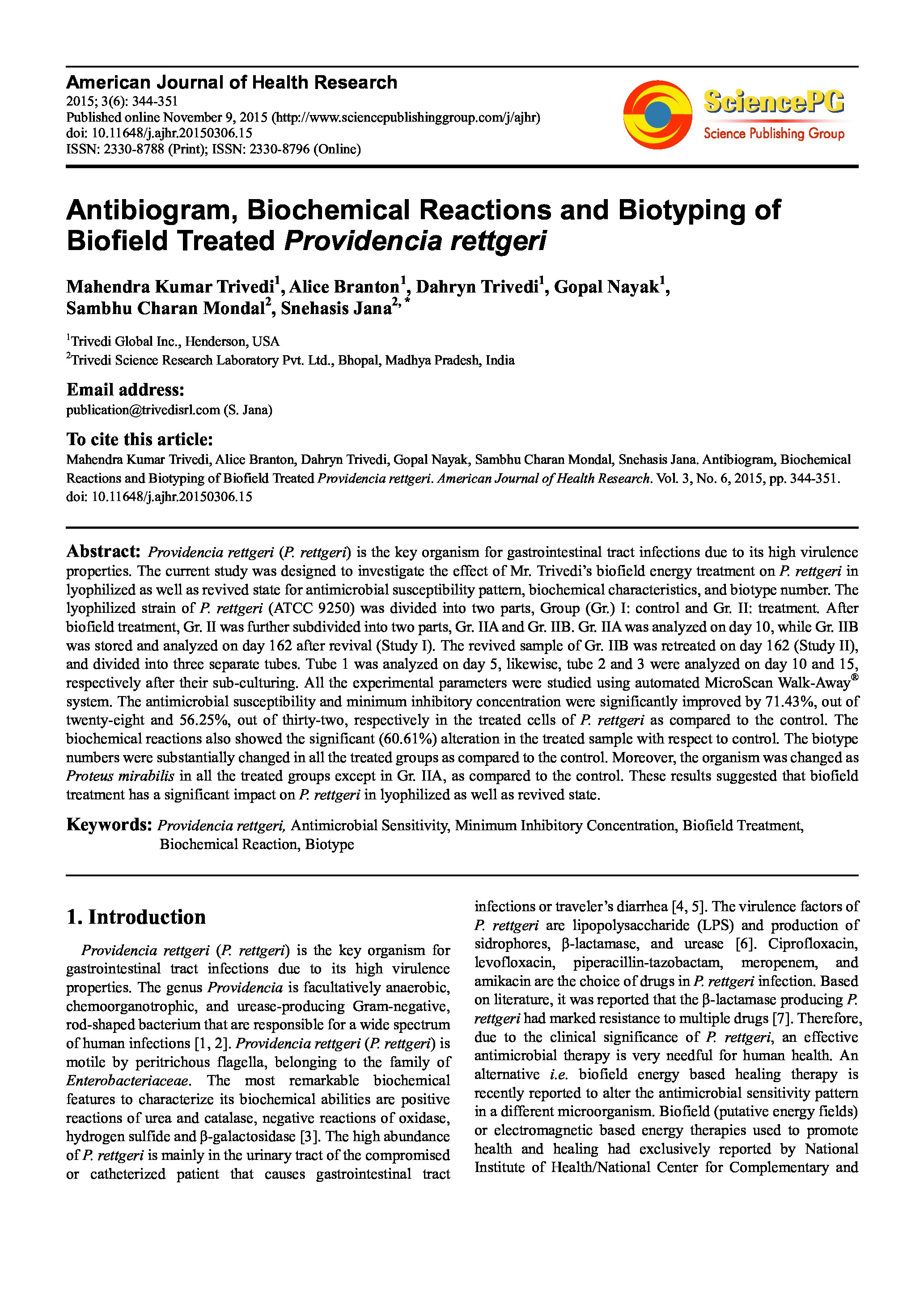Antibiogram, Biochemical Reactions and Biotyping of Biofield Treated Providencia rettgeri
Affiliation
Trivedi Global Inc.; Trivedi Science Research Laboratory Pvt. Ltd.
Main category
Natural Sciences (Biology)
Abstract
Providencia rettgeri (P. rettgeri) is the key organism for gastrointestinal tract infections due to its high virulence properties. The current study was designed to investigate the effect of Mr. Trivedi’s biofield energy treatment on P. rettgeri in lyophilized as well as revived state for antimicrobial susceptibility pattern, biochemical characteristics, and biotype number. The lyophilized strain of P. rettgeri (ATCC 9250) was divided into two parts, Group (Gr.) I: control and Gr. II: treatment. After biofield treatment, Gr. II was further subdivided into two parts, Gr. IIA and Gr. IIB. Gr. IIA was analyzed on day 10, while Gr. IIB was stored and analyzed on day 162 after revival (Study I). The revived sample of Gr. IIB was retreated on day 162 (Study II), and divided into three separate tubes. Tube 1 was analyzed on day 5, likewise, tube 2 and 3 were analyzed on day 10 and 15, respectively after their sub-culturing. All the experimental parameters were studied using automated MicroScan Walk-Away® system. The antimicrobial susceptibility and minimum inhibitory concentration were significantly improved by 71.43%, out of twenty-eight and 56.25%, out of thirty-two, respectively in the treated cells of P. rettgeri as compared to the control. The biochemical reactions also showed the significant (60.61%) alteration in the treated sample with respect to control. The biotype numbers were substantially changed in all the treated groups as compared to the control. Moreover, the organism was changed as Proteus mirabilis in all the treated groups except in Gr. IIA, as compared to the control. These results suggested that biofield treatment has a significant impact on P. rettgeri in lyophilized as well as revived state.
DOI
10.18147/smn.2016/paper:407
Do you have problems viewing the pdf-file? Download paper
here
If the paper contains inappropriate content, please
report the paper. You will be redirected to the landing page.
